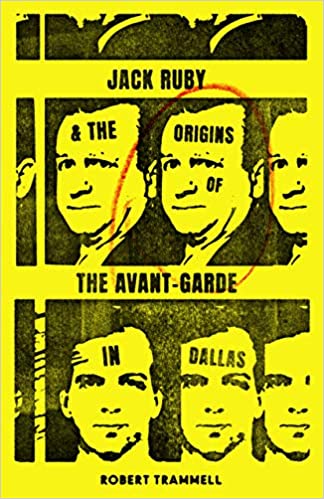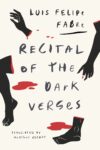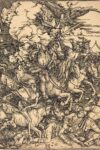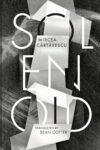
[Deep Vellum; 2021]
Jack Ruby, what a mensch! A “health nut” in Texas’ artery-clogging culinary culture, we know he was an empathetic person who could be motivated by selflessness — he’d been seen bringing food and encouragement to the hardworking men of the Dallas Police Department, the Warren Commission included a small subsection on his “Generosity to Friends and the Need for Recognition” as well as his “Affection for Dogs,” and of course he carried out his “starspangled action” (in the words of Robert Trammell), fatally shooting Lee Harvey Oswald in order to spare Jacqueline Kennedy the emotional torment of testifying at Oswald’s trial. Indeed, Jack is who we’d all want as a corrective to any mid-century city that is run by reactionary troglodytes like Dallas mayor “Uncle” Bob Thornton. The Dallas Morning News asked Thornton if he’d even been to the Symphony, and he responded that “he hadn’t and if he had to he wouldn’t help raise another cent,” but given that “a symphony orchestra was absolutely necessary if Dallas was going to be an International City,” he’d look for funds. “That attitude angered Ruby,” Trammell writes in his genre-defying story collection Jack Ruby and Origins of the Avant-Garde in Dallas. “He knew art wasn’t just about the bottom line.” Yes, Jack also deeply feels the need for Dallas to become an “International City,” but his ambition is scrubbed clean by its artistic, not economic pretentions. His concern is with the Museum of Fine Art that is, under the weight of its board, banning Communist artists like Picasso and Rivera. Jack “wanted to do something for the city that would make the Armory show look like small potatoes.” With the goal firmly in mind he wavers on the means and writes to Joseph Beuys for advice on “whether his weapon should be art or a gun. Maybe he could figure a way, an Action where he could use both.” Beuys responds: “Simplify it Jack . . . Prepare an action.”
Ruby, of course, also contains all those contradictory forces coursing through the post-war American project that burst forth in the assassination of John Fitzgerald Kennedy — the kind of contradictions that are irresistible to a Dallas-based counter-cultural poet like Robert Trammell. Ruby has a propensity for violence (documented by the Warren Commission). He has a biography (Jewish, working class, violence at home, a prohibition-era Chicagoan) from which the Warren Commission can’t help but build a determinative psychology. He works in vice (at the Carousel Club, with ties to the underworld), but is proudly patriotic (as emphasized by the Warren Commission). As we come to appreciate in Trammell’s acts of projection and counter-history, the mere fact of living in Dallas for any significant period of the 20th century is enough to make obvious what many Americans slow on the uptake eventually came to realize — that such a signal, prismatic historical event by such a complicated figure couldn’t be handled by the establishment’s supremely unimaginative account. That the official record needn’t be taken seriously. That America, that Dallas in particular, makes weirdos, the truth of whose identities are more fruitfully explored at a bar stool (more on this later) than in a congressional commission.
When Robert Trammell died in 2006 his wife said of Jack Ruby and the Origins of the Avant-Garde in Dallas, “We had a lot of conspiracy theorists buying it without realizing what it was.” What it wasn’t was Mark Lane, James DeEugenio, or any number of devoted researchers advancing the science on what exactly went down in Dallas in 1963. What it was is more in line with totally weird, totally plausible American counter-histories like Ishmael Reed’s Mumbo Jumbo, or more to the point Reed’s The Terrible Threes, which ends with the charlatan televangelist Reverend Jones “leading the nation in prayer for the recovery from the Terribles which have plagued the nation since Dallas, November 22, 1963.” A brisk and bracing 80-page novella, Trammell mixes snippets of conversation, commentaries on Ruby’s growing resolution to “make Dallas an International City” at all costs, and images and acts of violence that are circulating around the city and country in some undefined relationship to the catastrophe about to befall Dallas and Ruby himself. Contra Trammel’s wife, Adrienne Cox Trammell, there is a lot here for the conspiracy heads who, following James Douglass and Thomas Merton, are trying to find form for “the unspeakable” action(s) that surround the JFK assassination. As George Oppen wrote in Daybook II around the time of the assassination, “There is in everyone’s mind — I suppose I mean the intellectuals — that something is going on, and perhaps we are fools. We begin to remember again how much the thing matters to us, how much we have at stake, how very endangered we are, how far we are from the belt-buckled semi-fascist population of fanatical groups, and how very close we are to each other.”
There is the irresistible temptation to use Dallas as some sort of leverage point for lifting up a plausible narrative for post-war America — for poets like Oppen, or novelists like DeLillo, Mailer, James Ellroy, JG Ballard, or Nicholson Baker. What gets lost in this is Dallas itself, with its own scarred geography that emerges from the assassination. To this end Deep Vellum has published alongside the Ruby novella Trammell’s semi-autobiographical short stories that revolve around The Quiet Man, a small, unpretentious Irish pub in the corner of a Safeway parking lot on Knox Street. Here, as with the novella, myth and fact freely share the same conversational space, this time in the more proper setting of a bar that only serves beer and keeps the jukebox off as much as possible. For anyone who misses that peculiar epistemological space of a good dive bar, of students mixing with reprobates, of, say, a Jackie’s Fifth Amendment, a Dirty Franks, a Bobby’s Idle Hour, these stories are deeply pleasurable and deeply nostalgic. Here is one of many descriptions of the setting:
The Quiet Man is a little place and it would seem everyone would know everyone else but they don’t. There are several groups that are independent of one another: Oak Cliff Benny in the morning, businessmen at lunch, old men in the afternoon and at night there is a bunch from Texas Instruments, a few bikers who drink with the English mechanics, actors from the Theater Center, alcoholic professors from SMU, rugby players, some writers who will drink with anyone, some fringe customers who would like to drink with anyone but are usually excluded and a few who are happy to drink alone. Some groups interact. Some don’t. The amazing thing is that they all manage to fit peacefully into the small space. There is hardly any trouble. Like the diversity prevents it.
The first story, “D.J.’s Trial” quickly establishes that Oppen might have been soft-pedalling the situation, that instead of belt-buckled semi-fascists, “Dallas was more hospitable to the John Birch Society, the Klan, any right-wing outfit, even the Nazi party.” This is just a given for radicals like D.J., a very funny representative of undisciplined countercultural artistic pretention. The first story involves D.J. deciding, out of some vague revolutionary spirit, to take off his shoes and socks and air out his feet, violating bar and health code policy and tempting a lifetime ban from Quiet Man owner Mike Carr. They decide to hold a trial at the bar, but amongst the regulars the only reliable judge is Seth Ridley, a Nazi who “gets along with everyone fine until he starts some racist diatribe.” Seth exhibits great judicial temperament as D.J.’s pantomime self-defense crumbles, resulting in him being banned for life, which really means just waiting a few weeks to when he can sneak into the bar again and eventually rejoin his place amongst the regulars.
Seth is an indication of one side of Dallas — the far-right city that is inhospitable to the D.J.s of this world. Two of the most powerful figures in Dallas — H.L. Hunt, “the richest man in the world” as he is known by the regulars, and Clint Murchinson, owner of the Cowboys — are staunch supporters of McCarthy. The fact that Kennedy is trying to get rid of the “oil depletion allowance” has already made him a marked man amongst the city elite well before 1963. Highland Park, the richest and most conservative section of Dallas has “more police per capita” than anywhere in Texas, despite having little crime. What this means is that “things like a broken taillight or being Black can get you stopped and likely thrown in jail.” We see a version of this in the story “Evidence,” where two students are hassled and thrown in jail for no good reason (“They know he is guilty but can’t find the crime he is supposed to have committed so after keeping him in jail for over a week they finally have to let him go.”). Any trip to jail brings with it the necessary reminders of the city’s bloody past, that to enter the station is to “walk through the same sliding glass door that Oswald came out to be gunned down by Jack Ruby.”
The Quiet Man is a pressure release from all this generalized right-wing, anti-intellectual hostility, and here we get a sense of the other geography of Dallas. Improbably Southern Methodist University becomes one central node of countercultural currents, where people can at least ponder theological questions in peace. Several characters filter in and out of prison where they come into contact with esoteric religious texts as well as Donald Barthelme, another home-grown Texan who writes short stories worthy of being told by regulars at The Quiet Man. There are also alcoholic artisans, creative in a very special way, like when some of the mechanic regulars create motorized bar stools to race around the Safeway parking lot. Such races still occur today, and the official standard of what qualifies as a race-ready stool derives from these original Quiet Man creations.
The Quiet Man is named after the 1952 John Ford movie, “a great name for a bar but not a great movie.” The owner, Mike Carr, “had never been to Ireland so knows little about it other than what he got from movies and his father,” but what he did know is that a bar should be “a place where talk was as important as music.” Trammell makes so much out of this intuitive, basic business decision. Putting talk and stories at the center allows for a seamless mixture of the supernatural (there are several ghost stories), the comically everyday (like D.J.’s trial or his triumphant decades-later attempt to eat as much of the free buffet food as possible), and the occasional acts of violence and brutality that are simply part life in post-war America (one of the only stories that prominently features the bar television occurs on the day of Charles Whitman’s deadly shooting spree at UT-Austin).
Though the pitch is ratcheted down from the volume’s initial telling of the Ruby story, there remains the deep continuity of how art and the construction of meaning remains possible in inhospitable climes. Trammell writes that “Jack Ruby was like Dallas’s Andy Warhol. Before Andy Warhol was Andy Warhol Jack was ours.” In his book America Warhol himself wrote that “Everyone has their own America, and then they have the pieces of a fantasy America that they think is out there but they can’t see. When I was very little I never left Pennsylvania, and I used to have fantasies about things that I thought were happening in the Midwest, or down South, or in Texas, that I thought I was missing out on. But you can only live in one place at a time.” The great effect of pairing Ruby’s alleged artistic pretentions of exploding Dallas onto the international plane with the hyper-local happenings at an unpretentious dive bar on Knox street is to open up this fantasy space that Warhol sees at the heart of the American experience. Maybe it confirms Trammell’s suspicion that “Andy Warhol had gotten lots of his ideas from Jack.”
Michael Schapira is an Interviews Editor at Full Stop.
This post may contain affiliate links.







